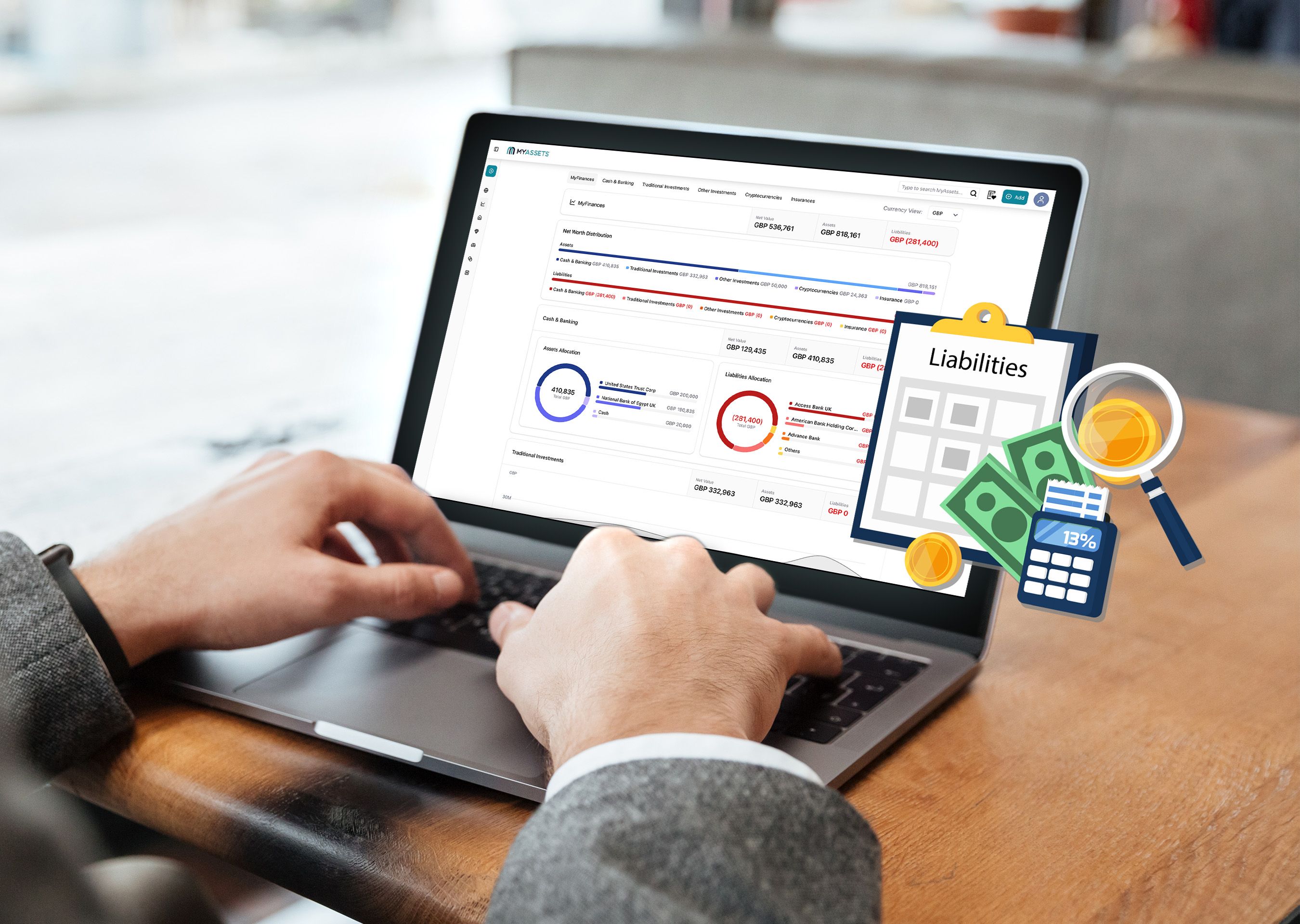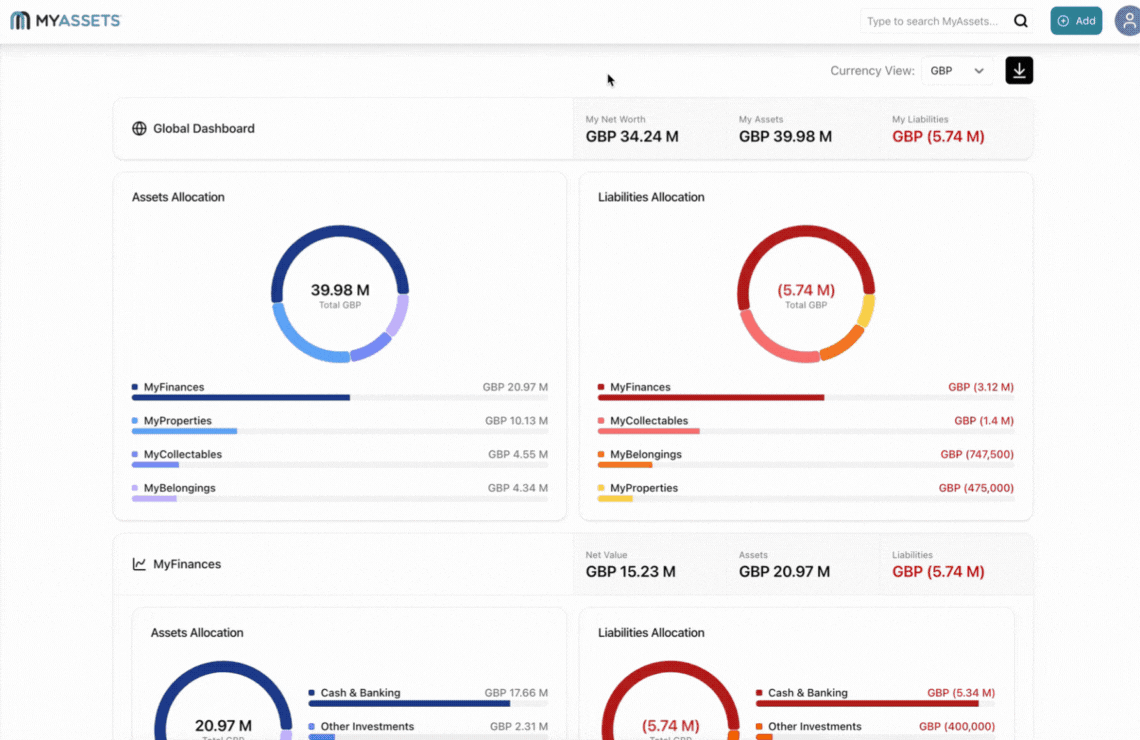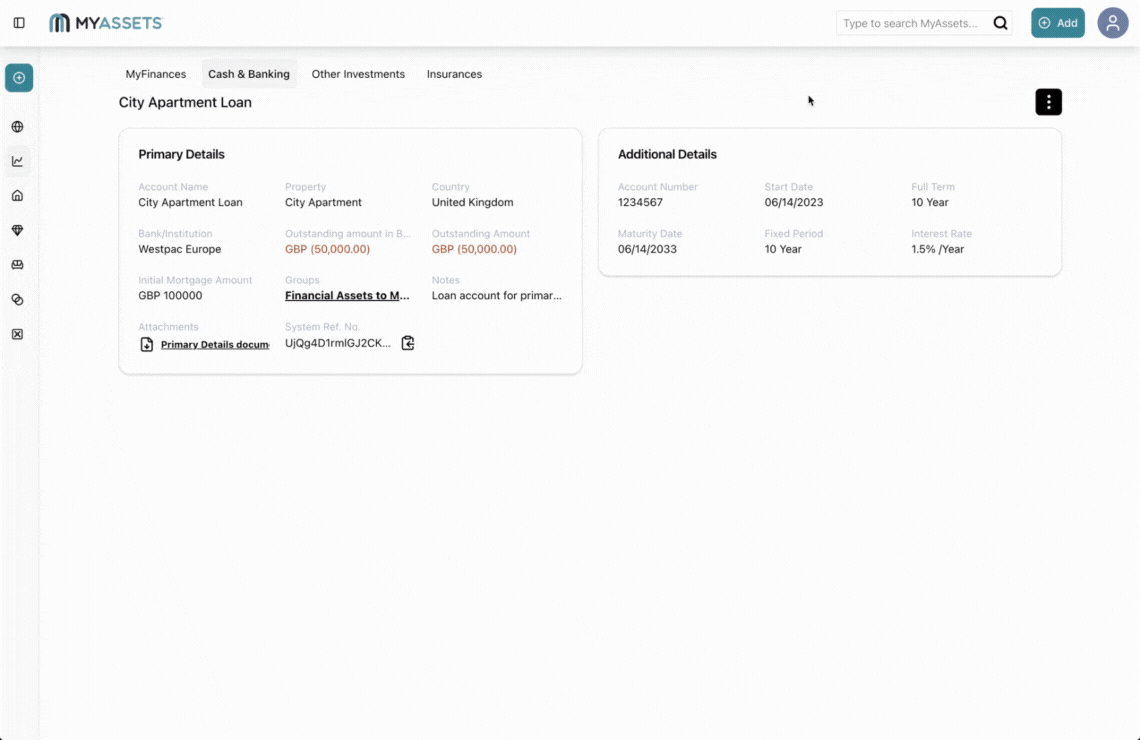In the realm of finances and accounting, you can’t have assets without liabilities.
Liabilities are a frequently overlooked but critical aspect when managing personal finances. Assets like homes, cars, and investments can be indicators of financial stability. But they can also carry hidden responsibilities.
Liabilities associated with personal assets, such as mortgages, car loans, or home equity lines of credit, can significantly impact your financial health. These liabilities represent money owed on assets that typically lose value or come with ongoing costs.
For example, ongoing loan payments can limit your ability to respond to emergencies, change jobs, relocate, or take on new financial opportunities.
This is why it’s crucial to closely monitor your liabilities. While personal assets can provide comfort and utility, the liabilities tied to them can undermine financial health if not managed carefully.
In a previous article, we discussed the importance of calculating your net worth. Doing this gives you the bigger picture of your financial positioning. It also provides a clear overview of your assets.
In this article, we will take a closer look at one of the key elements that make up your net worth: your liabilities. Keep reading to learn how to calculate liabilities associated with your assets and how MyAssets can help you.
- What is a liability?
- How to Manually Calculate the Liabilities Related to Your Assets
- How to Get the Total Liabilities for Your Assets with MyAssets
- Add your financial accounts to MyAssets.
- Include important details about your financial accounts in MyAssets.
- Link your financial accounts to your assets in the platform.
- Boost Your Financial Health with MyAssets
- Your Liabilities: Frequently Asked Questions
- MyAssets: Your Liabilities Calculator
What is a liability?
According to Investopedia, “A liability is something that a person or company owes, usually a sum of money. Liabilities are settled over time through the transfer of economic benefits, including money, goods, or services.”
There are two common categories of liabilities: current liabilities and non-current liabilities.
What are Current Liabilities?
Also known as near-term liabilities, current liabilities are usually paid within the year using your current assets. Some examples of current liabilities include:
- Dividends payable
- Interest payable
- Liabilities of discontinued operations
- Unearned revenues
- Wages payable
What are Non-Current Liabilities?
These include liabilities that fall outside the near-term category, meaning that it will take 12 months or more to pay off these non-current liabilities.
Some examples of non-current liabilities include:
- Deferred credits
- Deferred taxes
- Pension obligations
- Rent
- Warranty liability
To summarise, an asset is something you own or is owed to you, while a liability is a financial obligation you owe to another person or entity. Keep in mind that expenses are completely separate from assets or liabilities. Expenses are costs you incur to live, work, or operate a business. In accounting, it is more closely related to revenue.
How to Manually Calculate the Liabilities Related to Your Assets
This section gives you a step-by-step guide to manually calculating liabilities tied to your assets.
1. List your Liabilities
Collating all of your liabilities into one list is the first step. This gives you a complete overview of your financial situation.
There are different types of liabilities that you can include in your list. What’s important is accounting for all of them, as they play a big role in your total calculation.
If you’re not sure where to start, gather statements, contracts, or records for:
- Any legal or financial obligations
- Bills or unpaid expenses
- Credit card balances
- Loans (e.g., mortgage, auto, personal)
Once you have compiled these documents, you can categorise them between current (i.e. short-term) and non-current (i.e. long-term) liabilities.
2. Use a Balance Sheet
A balance sheet outlines your assets, liabilities, and equity at a specific moment.
Once you have a complete list of your liabilities, you can include them on the balance sheet and categorise them either as current or non-current liabilities.
Understanding liabilities on a balance sheet helps you assess financial health and determine how well assets cover those obligations.
3. Check the Basic Accounting Formula
The double-entry accounting method checks the liabilities on a balance sheet because it ensures accuracy and balance in financial records.
In this system, every transaction affects at least two accounts—one is debited and the other is credited—so the accounting equation (Assets = Liabilities + Equity) always stays balanced.
When you record a liability, like taking out a loan, you not only increase the liability account but also increase your cash (an asset). This shows where the money came from and where it went.
For example, you purchase a luxury card with credit, and the total credit purchase is £140,000.
Because you gained a new asset, a debit entry for the cost of the purchase (£140,000) will be made to the asset account.
To account for the credit purchase (or the new liability), a credit entry of £140,000 will be made to accounts payable. The debit entry increases the asset balance, and the credit entry increases the notes payable liability balance by the same amount.
Using the double-entry accounting method helps catch errors, provides a clear audit trail, and offers a more complete picture of financial health.
How to Get the Total Liabilities for Your Assets with MyAssets
This section explains how MyAssets can help you calculate the total liabilities associated with your valuables and belongings.
1. Add your financial accounts to MyAssets.
MyFinances, one of the core features of MyAssets, allows you to connect your bank accounts and manually add liabilities, such as your mortgages and loan accounts. This allows you to include all of your financial accounts in one central platform.
MyFinances provides visual charts that break down the amount from each account, categorising them either as assets or liabilities.
2. Include important details about your financial accounts in MyAssets.
Developing strong money management systems and skills can lead to personal financial success. This includes consistent record-keeping of your financial accounts and rigorous tracking of your finances.
MyAssets can assist you in this endeavour by ensuring that your accounts are organised and tracked on the platform, ensuring comprehensive records for each financial account.
In MyFinances, you can include important details about your accounts, such as:
- Balance
- Bank/Institution
- Card Name
- Outstanding loan amount
This makes it easier to access information about each account, should you need it.
3. Link your financial accounts to your assets in the platform.
MyAssets is a multifunctional asset management app that ensures you achieve your tasks and goals. As a holistic and dynamic platform, MyAssets enables you to connect your financial accounts to different assets.
For example, a mortgage account from MyFinances can be linked to one of your residences on MyProperties. This allows you to keep organised records about your liabilities and their relevant connections to different assets.
Boost Your Financial Health with MyAssets
There are different strategies you can implement for effective financial planning, but an essential part of any financial strategy is managing your liabilities.
Using MyAssets can help you in organising your liabilities and tracking the total amount as your investment portfolio grows. By implementing a robust approach to monitoring your liabilities, you can have a holistic view of your financial positioning and make more informed decisions about your finances.
Your Liabilities: Frequently Asked Questions
1. What is the difference between liabilities and assets?
According to AccountingTools, an asset is an expenditure that provides future economic benefits, while a liability represents future financial obligations. For example, a car may be considered an asset, while the auto loan that offsets this purchase is a liability.
2. What are total liabilities?
Your total liabilities include both your short-term and long-term financial obligations. The formula for calculating your total liabilities is:
Total Liabilities = Long-term Liabilities + Short-term liabilities + Other liabilities
3. What are examples of liabilities?
Some examples of liabilities include:
- Accounts payable
- Accrued expenses
- Interest payable
- Long-term debt
MyAssets: Your Liabilities Calculator
MyAssets provides a clear picture of your financial health, including your liabilities. Using MyAssets enables you to link your liabilities to the relevant assets. This provides a holistic view of your portfolio and allows you to interlink different expenditures on the platform.
Ready to take control of your assets? Start managing your liabilities today with MyAssets' 14-day free trial.



